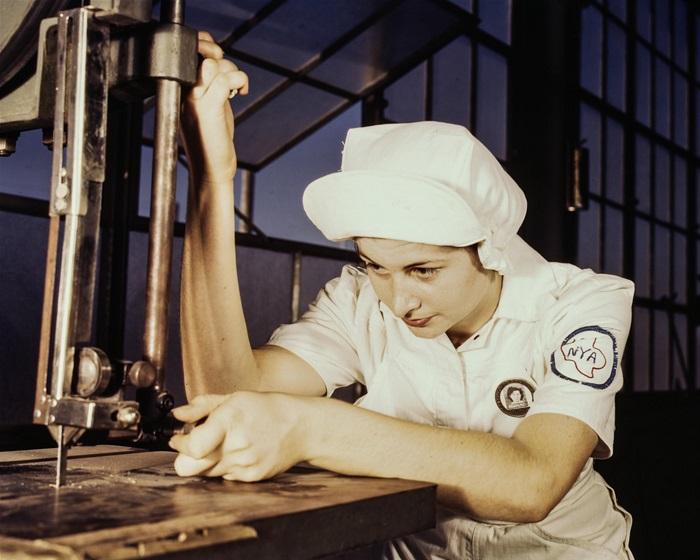Editor
- FMA
- The Fabricator
- FABTECH
- Canadian Metalworking
Canadian manufacturing needs more female workers
- By Joe Thompson
- October 15, 2019
During the Second World War, a group of determined female workers proved that manufacturing was not just a man’s world. They built the Jeeps and bombers and all the other materiel necessary to win the war. Now, 75 years later, that legacy is nearly gone.
A look at 2016 census data shows that only 16 per cent of workers in the major metalworking industries are female. This is despite the fact that women make up more than 47 per cent of the total labour force.
For an industry that is desperate for skilled workers, these numbers are hard to ignore.
It seems like a simple solution: Attract more female workers to manufacturing and close the skilled trades gap for good. Of course, it’s not that easy, and there are hurdles.
One of the biggest challenges facing an industry trying to attract more women actually is a different kind of gap, a financial one. The pay gap between male and female workers in nearly every industry is a shameful yet omnipresent fact. It’s no different in the metalworking industry.
The 2016 census reports that average annual employment income for men in the category of machining metal, forming, shaping, and erecting trades was $55,815. For women in that category, the income was $38,864.
The good news is that work is being done.
In August the Canadian Apprenticeship Forum (CAF-FCA) announced that a task force made up of some of its members from across the country has been established to oversee the development of a National Strategy for Women in Trades based on consultations with industry stakeholders over the last two years.
“Our country is going to need thousands of new trades professionals in the next five years, and the creation of a National Strategy to help attract more women to the trades will be critical to meeting labour market and economic needs,” said Shelley Gray, CEO of B.C.’s Industry Training Authority and task force participant.
The task force is working to establish a national target to increase participation and retention of female workers in skilled trades careers.
“We already know what the barriers are. Insights from this task force, along with 20 years of CAF-FCA national research in the area, will provide a clear direction on how to create sustainable change,” said France Daviault, executive director of CAF-FCA.
The time for change is now.
subscribe now


Keep up to date with the latest news, events, and technology for all things metal from our pair of monthly magazines written specifically for Canadian manufacturers!
Start Your Free SubscriptionAbout the Author

Joe Thompson
416-1154 Warden Avenue
Toronto, M1R 0A1 Canada
905-315-8226
Joe Thompson has been covering the Canadian manufacturing sector for more than two decades. He is responsible for the day-to-day editorial direction of the magazine, providing a uniquely Canadian look at the world of metal manufacturing.
An award-winning writer and graduate of the Sheridan College journalism program, he has published articles worldwide in a variety of industries, including manufacturing, pharmaceutical, medical, infrastructure, and entertainment.
- Industry Events
MME Winnipeg
- April 30, 2024
- Winnipeg, ON Canada
CTMA Economic Uncertainty: Helping You Navigate Windsor Seminar
- April 30, 2024
- Windsor, ON Canada
CTMA Economic Uncertainty: Helping You Navigate Kitchener Seminar
- May 2, 2024
- Kitchener, ON Canada
Automate 2024
- May 6 - 9, 2024
- Chicago, IL
ANCA Open House
- May 7 - 8, 2024
- Wixom, MI





















